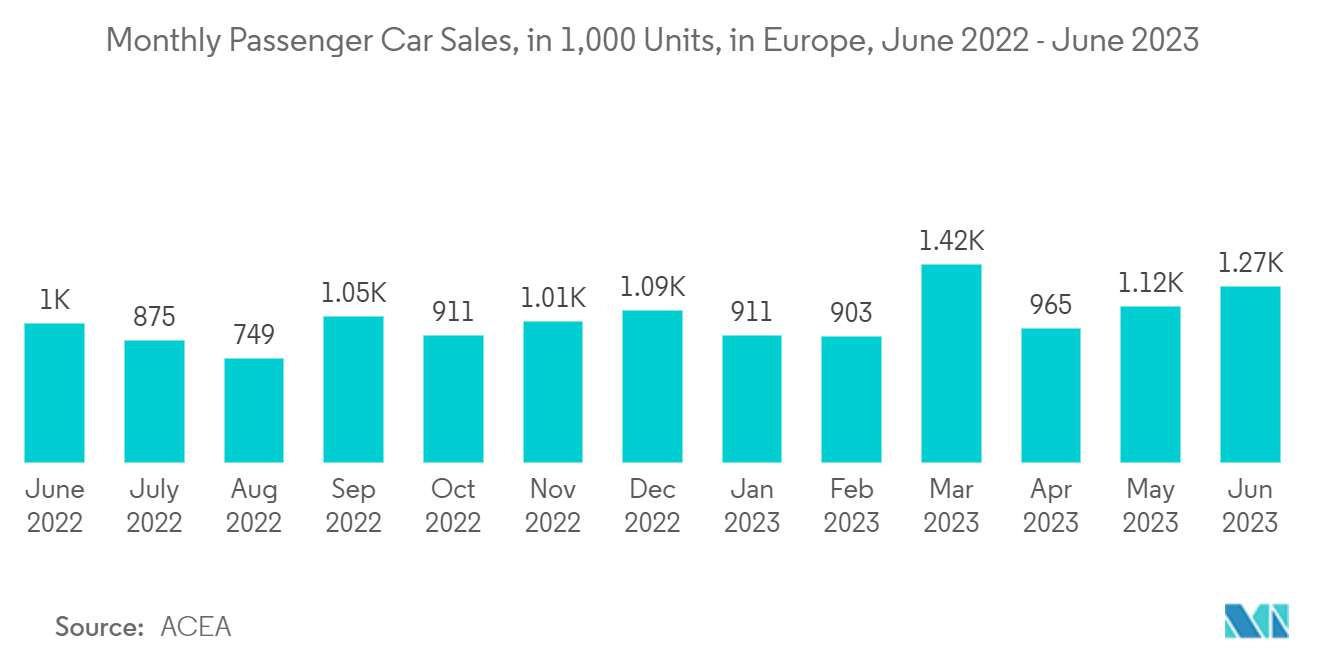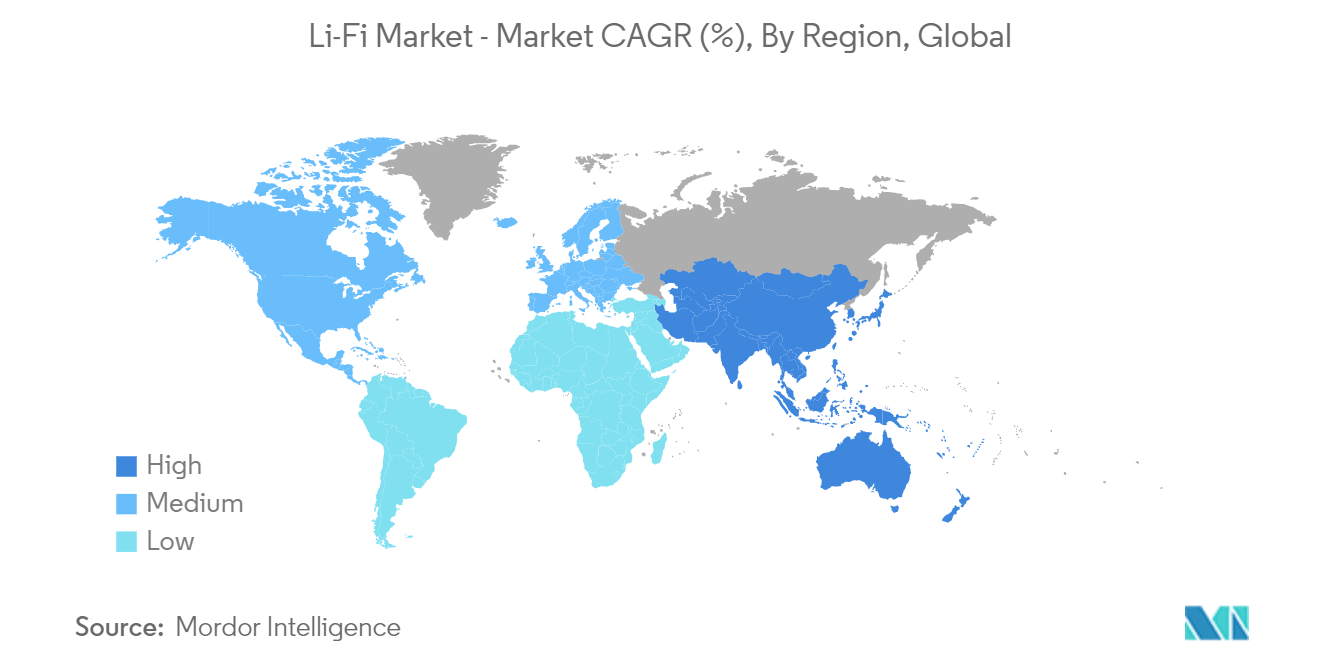Market Trends of Li-Fi Industry
Automotive and Transportation to be the Fastest Growing End-user Industry
- In recent years, there has been a substantial increase in the use of Light Fidelity (Li-Fi)/Visible Light Communication (VLC) technologies in automotive communication and connected automobiles. As the automotive sector embraces digitalization and connection, there is an increasing demand for efficient and dependable wireless communication solutions within cars as well as between vehicles and the surrounding infrastructure.
- As there is a paradigm change in road transport with the introduction of AI-enabled, network-connected electric vehicles and road safety standards, there is a rising demand to reduce road accidents. Li-Fi technology can help reduce accidents by transmitting data between numerous vehicles and between the vehicle and road infrastructure without any lag, thereby enhancing the situational awareness of the vehicles.
- The use of LiFi for smart traffic management can be done in two ways: Vehicle-to-vehicle (V2V) communication and Vehicle-to-infrastructure (V2I) communication. In vehicle-to-vehicle communication, data transmission occurs between vehicles via the front and rear lights. Information such as the vehicle’s braking distance, speed, obstacles in front of the lead vehicle, or other information like loss of vehicle stability can be passed on to the tailing vehicles or other nearby vehicles. This helps enhance the situational awareness of autonomous vehicles and can be used to maintain adequate distance between them. As the communication between vehicles is improved, with zero delay in data transmission, it can reduce road accidents.
- To improve the safety of an autonomous vehicle network, even the existing road infrastructure requires to be upgraded to smart infrastructure. Becoming smart will involve modifying components, such as road signage, pavement, traffic, and streetlights. The usage of LiFi for smart traffic control for vehicle-to-infrastructure communication is expected to include bidirectional communication between vehicles and road elements. Like V2I communication, V2V communication with LiFi will also help enhance road safety by allowing quick data transmission.
- Moreover, Li-Fi technology can be used to develop a smart highway navigation system. This technology can be utilized by employing visible light communication to exchange data between vehicles and infrastructure. Also, executing Li-Fi technology for highway navigation can contribute to a more efficient, connected, and safer transportation system by leveraging the advantages of high-speed, low-latency communication through visible light.
- Increasing the automotive industry in regions like Europe may further increase the demand for automation in the area, such as robots and cobots, among others, thereby driving the demand for the studied market. According to ACEA, In June 2023, passenger car sales in the European Union increased year-on-year at 17.8 percent. Customers in the European market purchased around 1.27 million units in total, and all but one of the countries experienced positive growth. At some 280,100 units, Germany remained the leading market for passenger car sales in Europe that month.

North America Holds Significant Market Share
- The region significantly contributes to the growth of the market studied. With the rising number of cybersecurity challenges faced while operating wi-fi over radio frequencies, the need for high-speed, reliable, and safe li-fi networks has witnessed a remarkable uptick in demand. According to IBM, as of 2023, the average data breach cost in the United States amounted to USD 9.48 million, up from USD 9.44 million in the previous year.
- In addition, the region is constantly investing in the defense industry, which may further propel the demand for Li-Fi technologies. According to the U.S. Congressional Budget Office, defense spending in the United States is predicted to increase yearly until 2033. Defense outlays in the United States amounted to USD 746 billion in 2023. The forecast predicts an increase in defense outlays up to USD 1.1 trillion in 2033.
- Moreover, the United States is a substantial market for vendors offering Industry 4.0 to grow significantly over the forecast period, owing to the early adoption of factory automation. The United States is on the verge of the fourth industrial revolution, where data is being used on a large scale for production while integrating the data with various manufacturing systems throughout the supply chain. This is fueling the adoption of Industry 4.0 and, thereby, the growth studied in the market.
- The Federal Government and the private sector in the United States are investing in Industry 4.0 IoT technologies to increase the American industrial base, which China and other low-labor-cost countries have taken over. The formation of the "Advanced Manufacturing Partnership (AMP)" is an initiative undertaken to make the industry, various universities, and the federal government invest in emerging automation technologies.
- According to the Government of Canada, the country's automotive suppliers export parts globally and are integral to Canada's automotive sector, which accounts for over USD 34 billion in sales annually. Automotive manufacturing has been one of the largest revenue generators for the country in the manufacturing sector. Ontario's automotive sector primarily relies on mixed technologies such as AI, ML, and wearable intelligent robots that assist humans in manufacturing.


